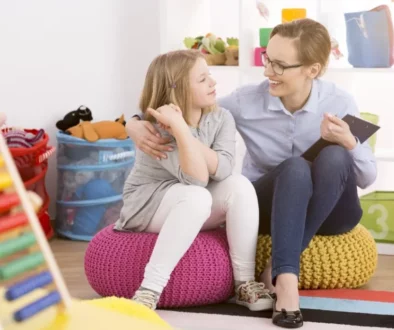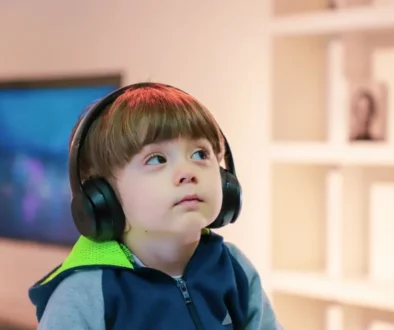Everything You Need to Do After a Child’s Autism Diagnosis
If you have recently learned about your child’s autism diagnosis, you are likely feeling overwhelmed and unsure of what to do next. Children can show signs of autism at 6 months and receive an autism diagnosis as young as 18 months of age. There is a lot to learn about what this means for you and your child and how it will affect their development.
Keep reading to learn everything you need to do after a child’s autism diagnosis.
Learn About Autism Spectrum Disorder
There is a lot to learn about autism spectrum disorder (ASD) because it is, as the name states, a spectrum. There is a saying that goes, ‘if you have met one autistic child, you have met one autistic child’. A single person is not representative of autistic people everywhere.
Learn more about ASD and what it could mean for your child and how it impacts their upbringing. It is a developmental disorder that affects different aspects of your child’s life.
Many professionals still use the terms “low functioning” and “high functioning” to define the life challenges of autistic children, however, these are nondescript and often unhelpful terms. Low or high functioning labels do not capture the strengths, weaknesses, needs, and experiences of autistic people. The reality of how people with autism function is much more nuanced.
Challenges of ASD
ASD is complex and often plays a part in every part of a person’s life. Challenges children with ASD may face are trouble with are:
Social: Interacting and communicating with others, difficulty maintaining eye contact, expressing emotions on their face, and recognizing nonverbal queues
Emotional: Difficulty expressing, explaining, or controlling their emotions, poor emotional regulation, apathetic behavior, anxiety, and depression
Behavioral: Engages in repetitive motions like hand flapping, rocking, jumping, poor fine motor skills, difficult with sensory processing, insists on following specific routines, refusing to obey commands, aggressive meltdowns, and self-injurious behavior.
You need to learn how your child interacts with others, interpret their surroundings, and what they do or use to cope.
It is important to learn more about autism spectrum disorder and how it impacts you and your child. These are just a few key things. Take your time so as not to overwhelm yourself and remember to ask questions.
Get Help
After receiving your child’s autism diagnosis, you should look into what help you can get to support them and your family. Early intervention is an important aspect of helping your child develop social, communication, and behavioral skills early in life. Therapies and early intervention programs can help the whole family adjust to their life with an autistic child.
Some programs to enroll your child in are:
- Occupational and physical therapy
- Speech and vocal therapy
- Behavioral and emotional therapy
- Developmental therapy
- Social skill building groups
- Psychiatric and medication services
Another part of getting help with an autistic child is helping yourself.
Reach Out
Having a child on the autism spectrum can be stressful, especially in the first few weeks after their diagnosis. It is important for you to reach out and find support. You will have to learn how to advocate for your child and help them navigate through the world.
You cannot do that without support, yourself. Talk to other parents and caregivers of autistic children and ask how they have coped with the situation. Look online or ask your child’s doctor about advocacy groups and talk to your family about how they can help.
Ask trusted family members or friends to watch your child so you and/or your partner can have some time to destress and adjust to your new situation.
Listen to Your Child
Children on the autism spectrum may be non-verbal or only able to speak in certain situations, such as at home or in calm environments. However, this does not mean your child isn’t trying to communicate with you. Autistic children have their own way of talking and they often make up words, repeat others, or refuse to make eye contact when they speak.
Types of non-verbal communication autistic children engage in are pointing, gesturing, drawing, writing, or even physically directing someone toward the thing they want or need. Communication tools, such as mobile apps, picture communication exchange systems, or voice output devices are available to help your child talk without using words.
Create a Structured Environment
Autistic children often seek structured environments, routines, and work well when they have an established routine. They may have an emotional attachment to one specific toy, want to eat the same food, or wear the same clothes. However, there is a fine line between routine and obsessions or rituals.
It is important to differentiate between rituals and routines after learning about your child’s autism diagnosis because enabling rituals may cause them to have a meltdown if something unpredicted happens.
Having a schedule can help your child throughout their day but you should leave room for new activities and make small changes as you go. Add extra time to help in the schedule for unforeseen circumstances and to help your child adjust.
What to Do After a Child’s Autism Diagnosis
It is easy to become overwhelmed after you receive your child’s autism diagnosis. It is important that you educate yourself on autism spectrum disorder and learn how to best help your child and yourself. By listening to your child, you can create a structured environment and build stability in your home. Finally, make sure you have help with your situation.
If you have any questions about your child’s autism diagnosis or are looking for autism screening in Texas, contact us today.



